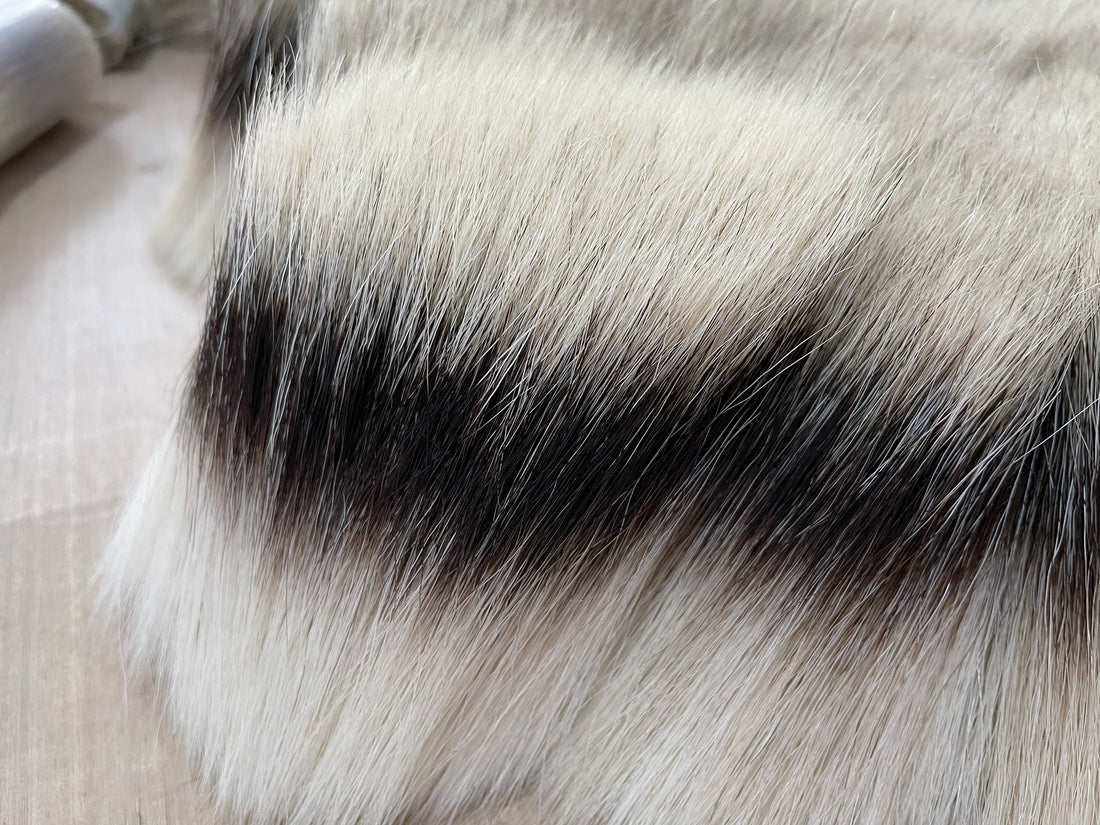Approximately six years ago, one morning, Mr. Ken sent me an email inquiring about European badger hair. At that time, many people harbored doubts about European badger hair, which cast an additional layer of mystery upon it.
Regardless of the answer to that question, from that day onward, the thought took root in my mind: one day, I would embark on a journey to discovery.
Three years later, late one night, Mr. Chen Meng also discussed the matter of European badger hair with me. This discussion reignited my plan to embark on that journey of discovery.
Later, Mr. Chen Meng sent me a shaving brush made of European badger hair, asking me to reference the characteristics of this hair. This time, I carefully compared the characteristics of badger hair from different regions of China with those of Europe.
First, I will state the conclusion: European badger hair is a finer type of two-band badger hair. The European badger hair brush I received likely had not been bleached, dyed, or chemically treated. The tips of the hairs were grayish-white, significantly different from Chinese badger hair. The grade of this badger hair was not low. The longer hair peaks indicated that this shaving brush used higher-grade raw materials, yet it differed from the badger hair found in Guangdong-Guangxi, Lingnan, Northeast China, and North China. It more closely resembled a two-band badger hair possessing characteristics of silvertip – soft and silky, yet also possessing a certain backbone. It could be considered a fusion of two-band and silvertip traits.
About three months after this incident, it was November, the season when we go out to source raw materials. During the sourcing process, we visited some local hunters and inquired about this specific material. Unfortunately, they did not focus on hair quality. While they were experts in badger habits, regarding this raw material, we had to rely on myselves.
In reality, the sources of badger hair are broader than people imagine. I previously mentioned four regions: Guangdong-Guangxi, Lingnan, North China, and Northeast China. In fact, there are more badger hair production areas in China, such as Central China, Tibet, and Xinjiang. However, the raw material output and characteristics vary significantly in each region. For example, Xinjiang almost exclusively produces silvertip, while Lingnan almost exclusively produces two-band. Furthermore, the badger hair from each region exhibits distinct characteristics.
For instance, the main production areas for two-band are North China, Lingnan, Northeast China, and Guangdong-Guangxi. But the characteristics of two-band in these four regions differ. The most extreme contrast is between Guangdong-Guangxi and Lingnan: the two-band from Guangdong-Guangxi is short and thick; the two-band from Lingnan is long and thin; the two-band from Northeast China is fluffier; and North China's falls somewhere between these characteristics.
I test the wire diameter (hair shaft thickness), average length, and elasticity of the raw materials I purchase each time. Even badger hair with the same wire diameter can have different elasticity, which is greatly influenced by the environment in which they grow.
Northeast China is cool with long winters. To resist the cold, the badgers there have more underfur (fluff). Guangdong-Guangxi is hot year-round, so there is less underfur, and they don't require excessively long hair for warmth. Thus, an interesting situation arises: the badger hair in Northeast China is long but primarily consists of underfur. This is not ideal for shaving brush manufacturers because its yield rate (usable hair for brushes) is very low. Therefore, Northeast China badger hair is more suitable for making cushions and hats. The yield rate in Guangdong-Guangxi is relatively higher, but the yield rate for two-band specifically is not high – black badger hair constitutes most of it, and the length of the two-band often doesn't meet standards, especially with shorter hair tips, which essentially disqualifies it from being considered high-end raw material.
There is another situation, like in the Lingnan region, which is mainly mountainous. Mountains have sunny slopes and shady slopes. Badgers living on the shady side and those on the sunny side have different coats. Badgers on the shady side have slightly more underfur and softer hair, while those on the sunny side have less underfur and coarser hair.
After so many years of visiting, researching, and studying meticulously, I can now almost judge the living environment and approximate region of a badger just by looking at its hair.
Over the past four to five years, I have driven over 20,000 kilometers annually and spent more than two months collecting raw materials and exploring the mountains. This is not only a work ethic but also a pleasure, because no one has ever integrated this knowledge. Many people only know one aspect of it and do not consider the raw materials across all of China and the badger habits of various regions. Only with a deep understanding of this knowledge can one have a say in the entire industry. This is also the attitude of OUMO and myself. Sometimes, doing something seriously is more important than the reward it brings. This is the meaning of life, the significance of existence.
I am very fortunate to have access to such abundant badger hair resources, and there are still some undeveloped areas waiting for me to explore.
Earlier this year, I went to Tibet to see Mount Gongga. Out of professional sensitivity, we visited some local fur markets and discovered that these resources also exist in Tibet. Simultaneously, Tibetan badger hair exhibited some new characteristics, so I purchased a batch of raw materials. The raw materials in Tibet are not as abundant as in North China or even Lingnan, and the locals do not make a living from it, so the purchase volume was very limited.
However, after we screened and classified this batch, it did not show effects beyond my expectations. It was closer to the badger hair from the shady slopes of Lingnan, but the underfur was not as abundant as in the Northeast. Considering the harsher natural environment of the Tibetan region, these raw materials were not developed into a separate system or series.
In April this year, not long ago, I went to Xinjiang again. At a market in Southern Xinjiang, I saw raw materials remarkably close to European badger hair – the hair was long and soft, with less underfur, This was very similar to the European badger hair I had seen before.
Just last week, I received this batch of raw materials. We sorted and classified it on a small scale. The final conclusion was exactly as I thought: this batch exhibited characteristics intermediate between two-band and silvertip. It possesses the soft touch of silvertip and the backbone of two-band. I knew it was time to launch a new series.
As an international artisan brand, one of OUMO’s missions is to promote China’s excellent artisan products to the world. We have always regarded innovation and development as the lifeline of the company, not only in product design and the application of new technologies but equally in the exploration of raw materials. We strive to provide the community with something new every year, such as new designs, new raw materials, new processing techniques, and new classification and screening methods.
In fact, regarding badger hair, I thought I would not bring more surprises to the community. However, providence favors those who work diligently. Fortunately, I discovered this new raw material, and this new raw material will inevitably bring new experiences to the community.
Thank you for reading!
Carry

